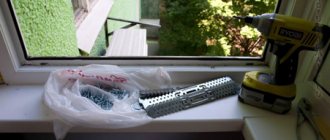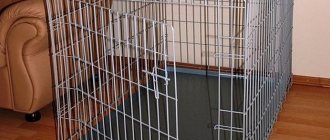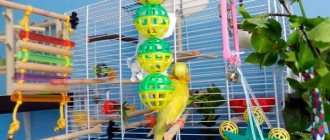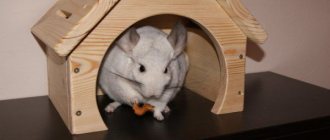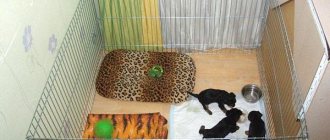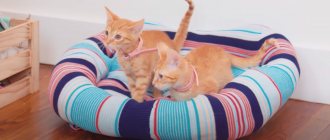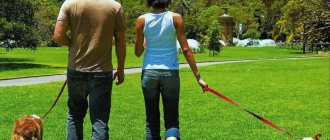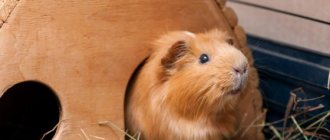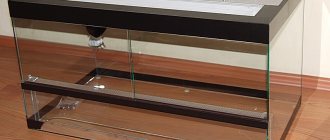Need for facilities
Fluffies by nature are predators and hunters. They need a lot of space for a variety of games and training. And enclosures in this case can be considered the optimal solution.
Quite often, such structures have unique play areas. The owners create small towns using ordinary boxes. You can also create a small house by sewing it with your own hands. There are many options, as evidenced by the photo. But why is a cat cage needed?
Many people take their pets with them to the countryside. And if transportation does not cause any difficulties, then upon arrival quite serious problems may arise. They manifest themselves in the form of neighboring cats, who immediately come running to meet your four-legged friend. They may leave behind fleas or unplanned offspring.
Stray dogs and vehicles can pose a danger to cats. According to statistics, pets who go outside live shorter lives. And the above factors contribute to this.
Making a house from plywood
You can make a beautiful house for a cat with your own hands and from construction scraps - plywood, thin boards, etc. You will also need beams that will act as supports for the vertical structure, and fabric for upholstery.
In order for the house to turn out just right, first draw a diagram with all the calculations on cardboard and only then transfer them to plywood.
The pillars can be wrapped with any twisted rope (jute, hemp, etc.), and for shelves and houses - use carpet. The main thing is not to use fabrics with long pile, as over time they will accumulate dust, wool and various small debris.
What does the design look like?
An enclosure for a cat is the same as the corresponding structure for a dog. With its help, your pet will have the opportunity to explore the world around him while being in a safe environment. It should be understood that the design must meet the needs of the four-legged furry.
A structure for a cat can take a variety of forms. This could be a walking path, a multi-storey recreation area, a playground and personal cabins in which it is convenient to sunbathe.
When building an enclosure with your own hands, keep in mind that it must protect the cat from snow and rain. Choose materials that will not rust. In addition, the design should be such that it is comfortable for the pet to walk, regardless of the weather.
The structure must be installed in a quiet place, protected from the wind. There should be no direct sunlight. To ensure your pet’s comfort, it is recommended to place all the necessary toys in the enclosure. The environment should be favorable for your pet to enjoy walks.
The video will show you what a structure for a cat might look like.
House-tent
Such a home for a furry pet is made of cardboard, fabric and foam rubber. To do this, you need to draw a complete blank of the future house on cardboard, and then cut out all the details. Next, we apply the templates to the fabric and foam rubber and cut them out.
Sew each detail one by one, creating several layers: cardboard-foam rubber-fabric. When all the parts are ready, assemble them into a single structure.
To make your cat feel warm and cozy, you can sew a soft pillow separately and place it on the bottom of the new house.
Making your own enclosure
Such structures are rare in markets. It's just that not everyone needs it. However, making it with your own hands is not as difficult as it might seem at first glance. The main thing is to choose the right tools and materials.
What will you need?
To create a house for a cat, you will need:
- Net.
- Reiki. The best option would be wood material.
- Nails. It is best to purchase self-tapping screws.
- Hinges for doors.
- Cement. Roofing iron is also suitable, with which you can strengthen the bottom, preventing the possibility of undermining.
- Door lock.
- Lining.
Grid selection
The grid may be different. It is important to select the material based on a specific situation.
The following options should be considered:
- Chainlink. Not an optimal solution for an enclosure. It is created by weaving the wire in a certain way. In this case, the rods are not welded to each other at the places of overlap. For this reason, a cat can damage its paws if it climbs on the net.
- Woven. This material is not suitable for an enclosure for the same reasons as chain-link. Although the weaving method is different, the rods are not welded to each other.
- Welded. The best option for an enclosure, since the rods are welded to each other. Sometimes the mesh is coated with polymers. Due to this, the material acquires corrosion resistance.
- All-metal expanded metal mesh. This is a metal sheet in which special diamond-shaped cells are cut. It is usually used in plastering work as a reinforcing material. Not suitable for an aviary.
Selecting slats and creating doors
After choosing a specific mesh, you will need to purchase wooden slats. It is recommended to paint them before use. From this material you need to make a frame for the mesh.
If it was decided to attach the enclosure to the house, it is necessary to make a door. One will be enough. If the structure will stand separately from the house, it is recommended to provide a special vestibule for the pet. It will prevent the cat from running out when the owner exits the door. In such a situation, there should be two such elements - from the street to the vestibule and from the vestibule to the enclosure.
Pet house
If you decide to build a large structure, provide a small house for your pet. It will provide shelter from rain or extreme heat. There are several options. You can build a house in the shape of a doghouse. It is worth placing it on a small pedestal so that the pet has to climb into it.
Also, a house for a cat can be large, human-sized. To create it, you can use lining.
Creating a floor
If you want your cat to walk on the grass, there is no need for flooring. However, it will be necessary to strengthen the enclosure around the perimeter. This will help prevent undermining. Cement should be poured along the mesh, using the boards as a frame. They can be removed after the cement has hardened.
You can simply bury the mesh about 20 cm into the ground. It is possible to use roofing iron, having previously cut it into small strips. This material should be driven into the ground around the perimeter of the enclosure.
If the cat is not supposed to walk on the ground, you will need to think about flooring. You can use materials to create it such as wood, cement and tiles. They all have advantages and disadvantages. For example, cement and tiles are more durable materials. However, in bad weather, your pet's paws will freeze.
Creating a ceiling
The ceiling is usually made of mesh. However, keep in mind that it should be shallow so that snow does not fall through it in winter. Since there can be a lot of it, the ceiling must be strong enough and durable.
House made of newspaper tubes
Don’t rush to recycle old newspapers – you can also use them to build a beautiful house for a cat. In addition to newspapers, you will need knitting needles or wire, glue and scissors.
First you need to form a lot of tubes: take a sheet of newspaper, coat one edge with glue and roll it into a tight tube. When the main building material is ready, start construction. Form a “sun” from knitting needles or wire, fastening the ends together, and braid it with tubes. The result was a foundation.
Bend the wire up and continue braiding, not forgetting to leave a gap for the entrance. The house should be large enough for the pet - take any object similar in size to the future “tenant” (for example, a ball) and place it in the middle of the structure. Finally, to be safe, open the structure with varnish.
Necessity or whim?
By nature, our favorite furballs, namely cats, are predators. They need a lot of space to train and play. In this case, a cat enclosure is the optimal solution. Quite often, when constructing such structures, a separate place is allocated for the playing area. Loving cat owners create entire playgrounds and even towns, without spending money on expensive materials, but using only boxes.
You can even create an unusual house by sewing it yourself. There are many options, and numerous photos from the Internet serve as proof of this. But why do you need a cat cage and is it really necessary?
Most people are accustomed to taking their animals to their dacha, where they move for the summer. And even if no problems arise during transportation, they may begin after arrival. Usually the problem appears in the form of neighborhood cats who ardently want to meet your kitty. After meeting the village folk, your pet may be rewarded with fleas and even unplanned offspring.
Making an aviary house for a cat
Design features
An enclosure for cats in the country is, in principle, the same as an enclosure for dogs. With its help, the cat will be able to explore the world around it without harming itself. It is important to understand that the design should not only fit well into the dacha space, but also meet the needs of your pet.
Such a structure can have any shape. This could be a walking path, a recreation area with many floors, a personal cabin, a playground and much more, which will allow the cat to be safe and sunbathe in the morning.
If you decide to make an enclosure for a cat with your own hands, it is worth considering that, if necessary (and it will appear), it must cover the animal from the rain. Preference should be given to materials that are not susceptible to corrosion. In addition, the design should be comfortable to the extent that the cat can walk comfortably in any weather.
The aviary should be installed in a quiet place that will be protected from the wind. Make sure that there is no direct sunlight on the location. For the comfort of the fluffy, we advise you to place all your favorite toys in the enclosure. The environment should be favorable from the very beginning so that the cat enjoys living in this place.
DIY cat enclosure
Such structures are very rarely found on the market, since not everyone uses such structures. But making an enclosure for a cat yourself will not be as difficult as it might seem at first. The main thing is that you can choose all the tools and materials correctly.
What will you need?
To make a summer cat house we will need:
- Metal grid.
- Reiki. Ideally they should be made of wood.
- Nails. Try to use self-tapping screws whenever possible.
- Hinges on the door.
- Cement . Sometimes you can use roofing iron, with which you strengthen the bottom to prevent the possibility of undermining.
- Lining.
- Door lock.
Selecting a grid
The mesh can be different, and this should also be taken into account when purchasing. It is important to choose the right material, but it depends on the situation and your pet in particular.
Let's consider these options:
- Ryabica. Not the best solution for a cat's enclosure. It is created by weaving wire according to a special pattern. But the problem is that the rods are not welded to each other when applied. A gutta-percha cat can easily climb through if it has not yet grown up and is of miniature size, but older individuals can damage their paws if they begin to climb up the mesh.
- Woven. The material is also not suitable for the same reasons as grouse. Although the weaving method is somewhat different, there is no fixation in the places of application, and some cats will happily chew on the fabric elements
- Welded. An ideal option for an enclosure, since the rods are welded to each other at the places where they are placed. Sometimes you can find mesh on sale that is coated with a polymer coating. Thanks to this, the material becomes resistant to corrosion.
- All-metal exhaust mesh. It is a sheet of metal in which diamond-shaped cells were previously cut. Usually used for plastering work as a reinforcing material, and is not suitable for an aviary.
Choosing slats and making doors
Once you have chosen the mesh, you will need to buy wooden slats.
It is better to paint them before using them. This will be our material for the mesh frame. In this case, if you decide to attach an enclosure to a residential building, you need to make a door. One is enough for you. If the structure is located at a certain distance from the house, it is better to make an additional vestibule for the cat. It will protect the animal from escaping the moment you enter through the door. In this case, there should be two doors in the cat’s enclosure: one from the street to the vestibule, and the second from the vestibule to the enclosure.
Bedroom house
If you decide to build a large structure, make a small house for the cat. He can hide in it in the heat or from pouring rain. There are several options, for example, to build a house in the form of a doghouse, and then you will have to put it on a low pedestal. But you can make a large house for a cat according to your height. For this you will need a lining.
Making the floor
If you want the cat to walk on the grass and enjoy the natural covering of the ground, there is no need to make a floor, but you will need to strengthen the enclosure around the perimeter. With its help you can prevent undermining. You need to pour cement along the mesh, and use boards for the frame. They can be removed only after the cement has dried.
You can also bury the mesh in the ground, about 20 cm. If you have roofing iron, cut it into small strips, after which they will need to be driven along the entire perimeter of the enclosure.
If you decide that the cat should not walk around the enclosure, think about the covering. For this you can use wood, tiles and cement. They all have their advantages and disadvantages. For example, tiles and cement are durable, but they will freeze the animal’s paws in bad weather.
Ceiling
The ceiling in a cat's enclosure is an irreplaceable thing. It is also made from mesh, but it is worth considering that the mesh should be fine so that snow does not fall through it. Since precipitation falls in large quantities, care should be taken to ensure the strength of the structure.
If you still don’t understand and you want more visual materials, we recommend watching educational videos on YouTube.
Construction
The size of the future structure is determined depending on the dimensions of the Maine Coon and the area of the garden plot. This breed of cat requires more free space compared to ordinary pets. In addition, the walls and roof of the enclosure must be strong. It is advisable to make a walk at least 2 m long and 3 m wide for one animal. Then the cat will not be too constrained in its movements.
READ Heart attack in cats
First of all, they determine the location on the territory and the location of the exit. Often, a cat enclosure is attached to the house to allow the pet to go outside. It's safe and convenient. Having marked the boundaries, we begin drawings and markings. For durability, the foundation is poured using the simplest technology.
Next, lay the roof or stretch the mesh. The next stage is the walls. They are usually made of metal rods that are fastened together. Welded metal mesh is also suitable. The main thing is that the Maine Coon cannot crawl into the holes or get stuck in them.
If there is no house inside, then they put up a canopy. Popular polycarbonate protects from precipitation, but allows sunlight to pass through and additionally helps to heat the air under the sheets. It is better to use bitumen, tiles or slate.
Aviary foundation. Basically, for the construction of an enclosure, a strip-type foundation is used. Making it is not very difficult:
- We dig a trench up to 50 cm deep around the perimeter of the building;
- we manufacture and install simple formwork up to 20 cm in height;
- add a layer of gravel to the bottom of the trench;
- fill with ordinary cement mortar;
- To strengthen the foundation and to save mortar, you can add stones and broken bricks to the trench.
After the solution has hardened, it is necessary to lay waterproofing (polyethylene film, roofing felt) on the concrete. Waterproofing will protect metal parts from corrosion and wood from fungus.
Aviary floor
The floor in the enclosure must be made of high quality, because the durability of the entire structure will depend entirely on it. So, let's look at how to make a floor from several layers:
- We install the channel on the finished foundation.
- Then we weld a rectangle from these channels.
- We line the inside of the rectangle with boards.
- The boards must be treated with an antiseptic.
- We place any insulating material (roofing felt, plastic film) at the bottom.
- Then we add gravel.
- Fill it with concrete.
- After the solution has hardened halfway, we place wooden logs on it and recess them.
- We will lay a wooden floor on top of this entire structure. We secure the boards with screws so that the pet does not injure its paws.
The distance between the ground and the floor (almost 15 cm) creates good air circulation, which contributes to the rapid evaporation of moisture. The floor should be made with a slight slope towards the gate, which will subsequently simplify cleaning the enclosure.
Lattice wall
The best option for a lattice wall would be to make it from iron rods with your own hands:
- in each corner we weld or bolt a profile pipe to the channel, thus creating a supporting structure;
- then, from corner to corner, we attach horizontal iron rods in the enclosure, checking the horizontality of their fastening with a level;
- We check the evenness of the fastening of the vertical rods with a plumb line, make the distance between the rods from 5 to 10 cm;
- the door is made separately, according to the size of the opening in the welded frame.
Remember that square metal rods are more rigid than round rods.
Outside, solid walls are sheathed with any material you prefer. Then a layer of insulation is laid. The inside of the walls is covered with wooden material, preferably with a board that must be cleaned on one side. The boards should fit tightly to each other to avoid drafts.
Dog feeder
It is advisable to carry out the process of feeding the animal without entering the enclosure. To do this, we make a folding window in the lattice wall of the enclosure. The size of the window depends on the size of your pet.
Using a rotating device, the window can be opened and closed. Bowls with food and water are inserted into special holder rings. When the window is closed, the bowls are inside the enclosure.
Do-it-yourself enclosure for a dog.
If the dog enclosure will be located in the same place, then the first step is to dig a place for the foundation. The depth of the pit can be from 1 to 1.5 m.
Even more information about animals can be found on the website https://zeleniymir.org
A layer of large stones is placed at the bottom. After this, they are fixed with concrete mortar. For the mixture to dry completely, it takes 1 to 3 days from the moment the concrete is poured.
Upon completion of laying the foundation, they proceed to the installation of fences. To do this, a frame of metal elements is prepared in advance. All parts must be firmly attached to each other, which guarantees the reliability of the structure.
What is a cat enclosure?
A cat enclosure is an area fenced with mesh or bars for keeping an animal. It is made spacious, forming a kind of room for a pet. The cat does not feel forcibly held inside by arranging the space with everything necessary - beds, a toilet, play areas, bowls of water and food.
It is worth distinguishing between cages, playpens and enclosures. They are similar because they are an enclosed structure, but there are significant differences. The cage involves the temporary placement of an animal and is small in size. There are no conditions for the animal to spend time in it (at best, bowls with water and food and bedding are placed in the cage). In a spacious and well-equipped enclosure, the cat can not only eat and sleep, but also play. The difference from the playpen is the presence of a lid - the playpen structure does not have one, there are only side walls, so it can only hold small kittens.
The animal cannot get out of the enclosure (unlike a playpen), but feels comfortable in it (compared to cages)
What does the design look like?
Aviaries can be indoor or outdoor. If you need to allocate space inside an apartment or cottage, it is enough to separate part of the room with a partition.
It is convenient to place the cat enclosure in the house near the window
Owners of private houses will benefit from the option of structures in the yard. You can build a spacious enclosure, similar to a cat's manor - with several levels and different types of play areas.
The cat enclosure can be placed close to the wall - if in such a design a passage is made through the window, the animals will be able to enter the house
Constantly keeping domestic cats in even the most well-equipped and spacious outdoor enclosures is not advisable due to the changeable climate of our country. But as a temporary or seasonal measure, such designs are ideal.
Why do you need a cat enclosure?
The main task of the enclosure is to contain and create a safe environment for the pet. The tradition of letting cats into enclosures came from North America, where it is not customary to keep pets in the house all the time, but at the same time leaving animals to roam freely on the streets is dangerous because of cars, dogs, and flayers. Spacious enclosures located inside houses, on the porch or in the yard are called catios (cat + patio) in the USA.
Enclosures have become widespread in nurseries - with their help it is possible to limit the communication of cats without keeping animals in cramped cages
An aviary inside the apartment will allow cats to be placed there while cleaning the house, repairing, cooking or visiting guests. The animal will not get underfoot and the owners will not have to worry about its comfort, as would be the case if it was locked in a cage. Enclosures are indispensable for breeders - pregnant cats, females with babies or young kittens inside are isolated from other animals.
Enclosures should not be a prison for cats, but their personal space
A pet in an outdoor enclosure will be in the fresh air, but at the same time will avoid all the troubles of a free walk. The fence will protect you from unwanted pregnancy, infection from street animals, getting hit by a car or being attacked by dogs.
In outdoor enclosures, domestic cats are both in the fresh air and safe
Functions of enclosures
Keeping pets in a fence all year round in domestic spaces is problematic due to the harsh climate. But as a temporary or seasonal measure, enclosures for cats in the country will be an excellent solution to many problems. This is especially true for owners of breeding breeds, when it is necessary to protect the animal from contact with yard representatives of the cat family. An outdoor enclosure in a summer cottage will help avoid unwanted cat pregnancy, infection and fights. At the same time, the pet will frolic in the fresh air, exploring the world outside the apartment.
In addition to spacious outdoor enclosures, there are also small structures designed for installation in an apartment. There are various reasons for purchasing fencing:
- giving birth to a cat;
- for moving small kittens to avoid the risk of injury to the animal;
- if there is a need to isolate the breeding cat from the cat;
- enclosures for apartments are sometimes used as exhibition tents;
- small playpens are convenient for short-term country holidays or when there is a need to keep an animal.
Ready-made cat enclosures
You can find different options for cat enclosures on sale. They cost a lot, but they are ready-made structures where you can immediately release cats:
- Deluxe Cat Home (manufacturer: Prevue Pet Products Premium, USA). Suitable for installation in apartments and inside houses, can be used for exhibitions. It has wheels so it can be easily moved. Designed for 1–2 adult cats. It has built-in shelves for seating and hammocks that form 5 levels (the lower one can accommodate a litter tray and/or bowls). The price of the design is from 7500 rubles.
The Deluxe Cat Home enclosure is suitable for temporary isolation of a cat in an apartment
JAXPETY Cat Wooden House is a prefabricated model: when the need for an enclosure is no longer necessary, it can be disassembled in 15 minutes
The Trixie Cat Homes enclosure can accommodate up to three adult cats.
Several enclosures can be connected to create a large cat town.
The La Luna Pet Care Cat Enclosure is a lightweight design that can be carried by hand without disassembling
If desired, you can order the production of an enclosure according to individual requirements (according to your size or unusual design). It will be expensive (2-3 times more expensive than buying a ready-made kit). An alternative solution is to make an enclosure with your own hands, which will cost much less than ready-made models and custom-made options.
Video “Constructing a house”
How to make a house for your pet? It's not very difficult if you put in a little effort. The video will talk about the process of creating a house from simple boxes.
Sorry, there are no surveys available at this time.
Was this article helpful?
Thank you for your opinion!
The article was useful. Please share the information with your friends.
Yes
No
X
Please write what is wrong and leave recommendations on the article
Cancel reply
Rate the benefit of the article: Rate the author ( 2 votes, average: 4.50 out of 5)
Discuss the article:
How to make an aviary with your own hands
The construction of a cat enclosure begins with design. First you need to decide on the sizes. They directly depend on the number of animals you want to place there. For one pet, an enclosure with a minimum area of 6 m² will be comfortable, but the larger the size, the better.
Large cats, such as May Coons, need large enclosures
What tools and materials will be needed
An important condition is that all materials must be non-toxic, without strong odors, cracks or protruding sharp parts that could injure the animal. To work you will need:
- material for the frame - the best option is wooden slats (floor or ceiling slats, sold in any hardware store, are suitable, they cost about 40 rubles for a strip 2 meters long);
- flooring materials - these can be wooden boards or sheets of plasterboard, on which any moisture-resistant material (for example, linoleum or tiles) is then placed;
- walls - this can be a chain-link, a mesh or a fabric mesh (their approximate price for a roll of 10 m is 910, 430 and 300 rubles, respectively);
- fasteners (nails or screws, metal corners);
- door hinges and a lock (the latter can be replaced with a hook).
If you need a solid enclosure for the yard, then it is better to pour the bases of the slats in cement. This will protect you from accidentally falling over in the wind and will protect you from possible digging by cats. Also, for outdoor enclosures, it is recommended to use not chain-link or fabric mesh, but welded rods or all-metal expanded metal mesh - these materials will last longer. It is better to use corrugated sheeting as a roof, which will prevent rain from getting the animals inside wet.
Manufacturing stages
The operating procedure is as follows:
- Preparing blanks for the frame: we take measurements and cut the slats into pieces of suitable size (there should be at least 5 of them: 4 vertical for the corners and 1 horizontal beam laid on top under the roof).
- Laying the base (floor): we place timber or sheets of plasterboard around the perimeter, securing the parts to each other with self-tapping screws or a metal corner (when making a home enclosure, the slats do not extend beyond the boundaries of the base; for an outdoor one, they go deep into the soil to a depth of 10–15 cm and are poured on top cement).
- Installation of vertical posts: we place them in each corner of the base, fixing them with metal corners.
- Installing the top trim: we connect the vertical slats along the entire perimeter with wooden blocks. In the upper part we lay a long beam or board horizontally, which will not allow the roof to sag.
- Preparing the mesh: measure the walls, cut 4 pieces of mesh for each side with a margin of 2-3 cm (if the enclosure is home, then cut another piece for the roof). In one of the parts of the mesh we make a cutout for the door.
- Fastening the mesh: we sheathe the frame around the perimeter, fixing it with screws or nails (if an outdoor enclosure is being made, then the roof is made not of mesh, but of corrugated sheets).
- Installing the door: attach hinges and a door with a lock (or hook) to one of the slats.
- Floor arrangement: cover with linoleum or lay out tiles. You can make a more comfortable option - use carpet or wood (but then cleaning the enclosure will be more difficult). It is also not recommended to leave earthen flooring outside (cats can dig a hole under the mesh); the best option is a concrete floor.
Cozy fabric cat house
A comfortable “nest” for your cat can also be made from fabric and foam rubber. First, draw a template of a wall with a roof on paper. Cut out 8 such blanks from fabric (two for each wall). Four similar blanks need to be cut out of foam rubber, only the size should be a couple of centimeters smaller. Separately prepare the bottom in the same way.
Next, sew each wall from two fabric and one foam (inside) blanks. Don't forget to cut and sew an entrance hole on one edge. Now you can completely sew the structure together, including the bottom. Place a soft mat on the bottom and launch your pet!
Fixture functions
What reasons lead to the need to purchase a cage for keeping a cat at home? Among them:
- prenatal period, because in the last week of pregnancy the cat is given rest, and the family may have restless babies who bother the animal;
- recent lambing, and a cat with newborn kittens would benefit from a secluded, protected and safe home;
- the postoperative period, when the patient needs to maintain peace, sterility and cleanliness;
- safety, because a separate enclosure at the dacha protects the kitten from communicating with stray animals and getting lost.
Why does a cat need an outdoor enclosure?
For city residents, a trip to the dacha is associated with relaxation from the hustle and bustle, freedom and fresh air. If the family has pets, they will also be in for a journey and a change of scenery. Accustomed to confined spaces, cats find themselves in unknown, but so tempting territory; Their research instinct awakens and most animals are determined to explore the surrounding area. For a pet that is not accustomed to freedom, unexpected freedom can become a source of many troubles:
Video “How to make an enclosure for kittens with your own hands”
From this video you will learn how to make an enclosure for kittens yourself.
The three-story Cat Playpens cage, with dimensions of 91.4 * 58.5 * 127 cm, will appeal to any pet or several cats at once, since there is enough space here. There will be drinking bowls and feeders, trays, as well as numerous equipment for animals. The cage is metal, black, with two doors. If necessary, animals can be isolated from each other. Has the following advantages:
- at the bottom there is a plastic tray that is easy to clean;
- 4 wheels with lock available;
- The cage is completely dismountable and can be assembled without difficulty.
Manege
The Triol model represents an octagonal-shaped enclosure-tent for pets. The playpen is made of synthetic environmentally friendly material (100% polyester) and has dimensions of 740*740*345 mm. Under the fabric there is a rigid metal frame, the structure is foldable. When assembled, the playpen does not take up much space. If necessary, a removable roof made of rubberized fine mesh is placed on top, which closes with a zipper. All 8 large windows around the perimeter are equipped with the same mesh. The waterproof bottom is removable and can be easily and quickly secured with adhesive tape.
The playpen is perfect for a cat before giving birth and for keeping a kitten with her. Can be used both at home and in the garden.
Manufactured in three sizes. The price, depending on the size, ranges from 2,900 to 4,470 rubles.
Aviary
Galvanized enclosure for kittens (Dog Land). Reliable coating will last for a long time. Sold in sections, which can be easily assembled into any desired shape on a summer cottage or on the site of a country house. The size of one section is 60*55 cm. The segments are fastened together with plastic ties. The price of five sections will be 1,200 rubles.
The enclosure is suitable for keeping cats and dogs in open areas.
The enclosure can also be used for kittens.
How to choose a floor for an enclosure
Making an aviary is quite simple. Many dog breeders think about what kind of flooring to choose for construction. Here the preferences of breeders are not unanimous.
Some people prefer to leave the soil under the animal’s feet, while others, on the contrary, choose the cleanliness and aesthetic appearance of a specialized coating.
When choosing one option or another, it is necessary to take into account the dog’s preference. As a rule, many animals like to dig the ground, hide bones and lie in earthen holes. If there is artificial turf, the pet will feel uncomfortable.
How to do it yourself
We will advise you on how to make a fence for a cat in your country house or on the site of a country house with your own hands. First you need to decide on the size and location. The minimum dimensions of such a pen for one cat should be 2x3 meters. We will make the enclosure from metal pipes with a diameter of 1 inch. A fine mesh netting is suitable for walls.
Design requirements
Such an enclosure must comply with all sanitary standards. Even with the smallest dimensions, it must provide space for a toilet tray, a container for food and fresh water. Installing a small house for cats to rest is encouraged. You can equip the interior space with a playground with stairs and multi-tiered shelves, toys tied to them, numerous labyrinths and a place for hiding, and hammocks.
All listed items must be made from natural materials, and wooden products are not recommended to be painted or varnished. Carry out the treatment with special means.
Tools and materials
What materials will be needed when making an aviary:
- metal pipe;
- chain-link mesh, wire to strengthen it;
- wooden beam;
- slate, slate nails;
- self-tapping screws;
- cement, sand, crushed stone.
Step-by-step instruction
- Mark the dimensions of the enclosure on the selected area, according to the chosen plan, and dig holes around the perimeter at a distance of 1–1.5 meters for installing posts - metal pipes. The length is selected taking into account the roof slope. Provide space for an entrance gate.
- Insert pre-cut posts of a certain length into the holes, strengthen them vertically with crushed stone and concrete.
- We weld the same pipes onto the upper parts of the posts around the perimeter. The roof frame is ready.
- We install the mesh using wire and welding.
- We attach a wooden beam to the upper frame with self-tapping screws.
- All that remains is to lay the slate, securing it securely with slate nails.
- We make a gate separately and hang it on one of the posts using welded hinges, not forgetting about its secure fixation (latch).
- The design of the floor can be different, in our case it is lawn grass. Other options: pea gravel, poured concrete, paving slabs, boardwalks, untreated natural stone walkways.
We made an enclosure using mesh for the walls. We offer another option - to build a similar enclosure next to the country house. Then the wall of the house with the window will simultaneously serve as one of the walls of the enclosure. The animal will have an unhindered opportunity to enter and exit home through the window.
Video - Maine Coon in an enclosure
According to statistics, a cat lives even in every second family, which is quite a lot.
We love them very much, they are sweet, kind and don’t let us get bored, but cats need not only delicious food and our attention - they need their own space, which people will not intrude on. For this, as you may have guessed, there are special enclosures that will be quite easy to pick up if you just pay attention.
Enclosures for cats
To understand what kind of enclosures for cats there are, pay attention to this table, which shows in some detail and conveniently the general selection parameters:
| Element | A good choice | Bad choice (why) |
| Aviary area | 2 x 2 x 2 (H x W x D), m | 1.21x2, m - not suitable for long-term stay |
| Location by illumination | bright sun - impossible to hide from the heat | |
| Trees and ladders for climbing | no - the cat must move and encounter obstacles | |
| Floor at an angle | no - if the tray is not installed, there will be stagnation of waste | |
| Tray toilets | no - no need to violate your pet’s hygiene | |
| Frame covered with mesh | yes, the mesh is hard | yes, soft mesh - the cat can easily escape from the enclosure |
| Crevices and sharp corners | yes - cat escape, yes - possible injury or even suffocation | |
| Roof | no - there will be no sun protection | |
| Grass paddock | no - you need to keep the cat close to nature | |
| Brick house with windows | no - the cat needs especially personal space, which is suitable for complete privacy or childbirth, but windows are also needed so as not to block natural light | |
| Sleeping places | special boxes for sleeping and resting | Cats don’t like to sleep on the floor, so a sleeping place at a height will be necessary for their comfortable life. |
| Food and water | frequent change, automatic drinker | There is no need to constantly change food; there are automatic drinkers and other equipment for this. |
Enclosures can be divided into indoor, outdoor (full-fledged) and outdoor, in which the cat will not be kept for a long time. To make a good choice, you just need to take into account the character of your pet and try to choose something that will be the most spacious, but at the same time, not lacking space for sleeping.
Depending on the area that you have to allocate to your cat, enclosures are also not limited in size, so you can choose something modest or something impressive. As an example, we can say that it is better to use outdoor enclosures from 4 m2, which can be called the minimum mark.
Outdoor enclosures for cats
Outdoor enclosures continue to enjoy record popularity as the optimal solution for both the comfort of the cat and the comfort of the owners. Such an enclosure is not expensive, it is quite spacious and can be improved as you need, which will also not cost a lot of money. There will be a green lawn, a large space, a spacious house for sleeping, and any other entertainment. Let us note that the construction of the house must be approached especially carefully, because for your cat it will also be a “maternity hospital”. Here you can bask in cool weather, you can hide from the heat in sunny summers, so your home is the optimal solution for any situation. You can do anything you can imagine. For example, you can add lamps so that it is not too dark at night, you can discreetly add treats to the cat’s house so that she returns here with more pleasure.
For summer walks, you can add a special hole, with the help of which the cat will move into a free zone, which will allow you to feel protected in the house, and free during a walk. You can lay rugs on both sides, which will make the enclosure more comfortable and will delimit the cat’s zones. As an average hole size, they usually start from 30x20 cm, and then change everything, depending on the size of the cat.
An outdoor enclosure is perfect for breeds such as the Canadian Sphenx, Maine Coon and other breeds that are similar in disposition and characteristics to Bengal cats, as well as to most of all exotics. You need to watch this carefully, because this is an opportunity to really take good care of your friend. Outdoor enclosures are not required, but desirable for breeds such as Siamese cats, Persians, as well as fold-eared cats originally from Scotland and British cats. If your cat does not belong to these breeds, but is very active and clearly does not have enough space at home, then an outdoor enclosure will be the ideal solution.
We are forced to note that enclosures are not getting cheaper. Due to the fact that increasingly high-quality materials and ideas are invested in their development, they only become more expensive. Basically, only wealthy people can afford this, but please note that you can make an enclosure with your own hands, but this will require more time and, of course, more desire. At the same time, you will be sure that it is made to last.
If you have to leave part of the time, it won't be a problem for your cat. You can use an automatic drinker, and also use a special feeding table, which is located approximately 5 cm above the floor level. With the help of stairs and comfortable paths, you can cope with your cat’s desire to run and play pranks. Some of these mechanisms, especially moving ones, will really draw out all the strength from the cat, help you get a great workout and not sit in one place. If you are wondering how you can arrange an outdoor enclosure for your pet, be sure to pay attention to the photographs of completed projects. Now there are a large number of them, so everyone can navigate the presented selection and you will do it quite quickly.
